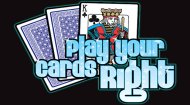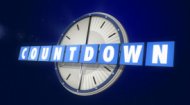At its heart, "Who Wants to Be a Millionaire" is a test of knowledge, nerve, and strategic thinking. The show's signature dramatic lighting, tense music, and the host's measured delivery create an atmosphere of immense pressure, enhancing the thrill of each question. But how to play "Who Wants to be a Millionaire" effectively? Let's delve into the mechanics that have made this Who Wants to be a Millionaire Quiz such a phenomenal success. The journey to becoming a millionaire typically begins with a "Fastest Finger First" round, where a group of contestants are presented with a question and asked to arrange four given options in a specific order (e.g., chronological, alphabetical). The contestant who answers correctly in the shortest time earns the coveted "hot seat" opposite the host and begins their quest for the million.
Once in the hot seat, the contestant faces a series of 15 multiple-choice questions, each with four possible answers (A, B, C, or D). The questions progressively increase in difficulty, and each correct answer moves the contestant up a money ladder, increasing their potential winnings. Key to the game's structure are "safe havens" (often at £1,000 and £32,000 in the UK version, or equivalent amounts in other currencies). If a contestant reaches a safe haven, that amount is guaranteed, even if they answer a subsequent question incorrectly. The beauty of the game lies in its simplicity. A question is posed, four options are presented, and the contestant must choose the correct one. There's no time limit for individual questions, allowing contestants to deliberate, ponder, and weigh their options. However, the pressure of the moment, the escalating cash prizes, and the knowledge that one wrong answer could cost them hundreds of thousands, or even millions, makes every decision agonizing. To aid contestants on their challenging journey, the show provides a limited number of "lifelines." These strategic tools can be used once per game and are crucial for overcoming problematic questions:
50:50: This lifeline eliminates two of the four incorrect answers, leaving the contestant with the correct answer and one incorrect answer. It significantly improves the odds, narrowing down the choices from four to two. Phone a Friend: The contestant can call a pre-selected friend or family member for 30 seconds to ask for their help on the current question. This lifeline relies heavily on the friend's knowledge and the contestant's trust in their judgment. Ask the Audience: The studio audience votes on what they believe is the correct answer. The results are displayed as percentages for each option, offering a collective wisdom snapshot. While often reliable, the audience isn't infallible, adding another layer of risk. After you've played this game, why not check out and play some of our other TV games?
|













